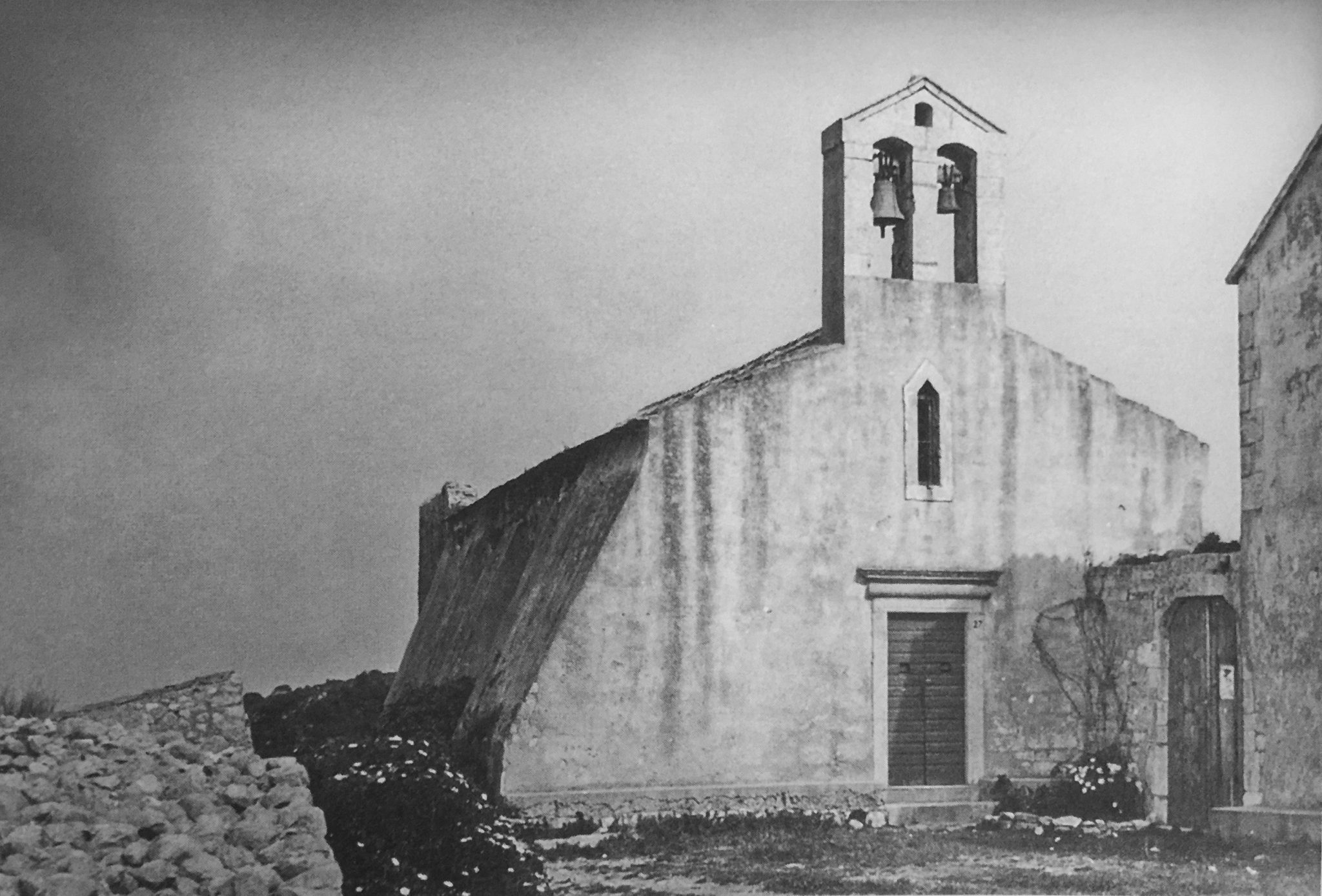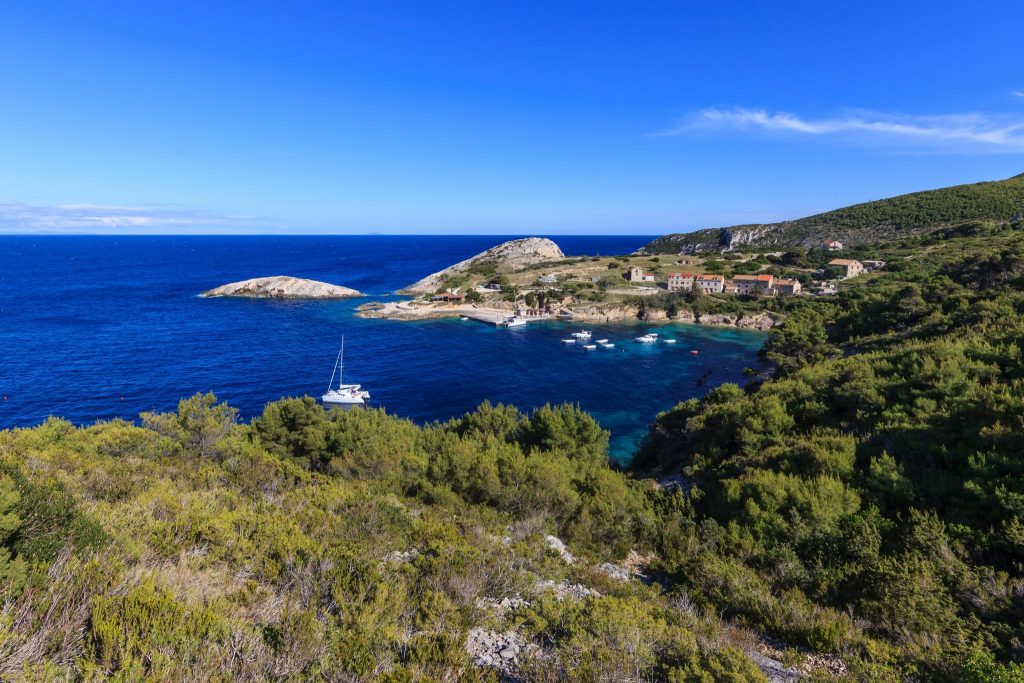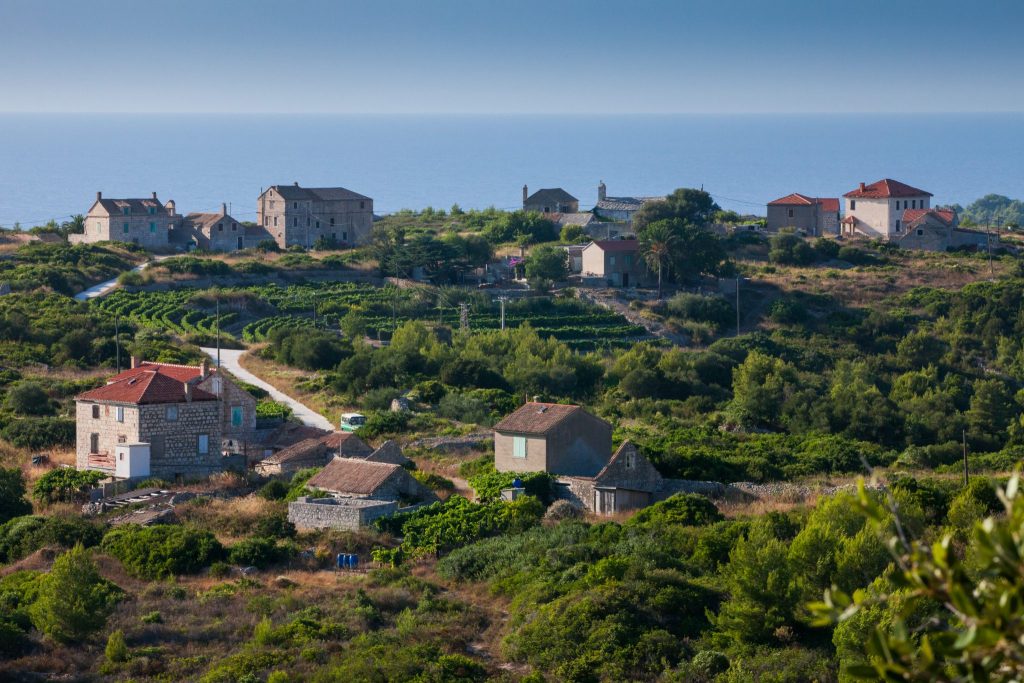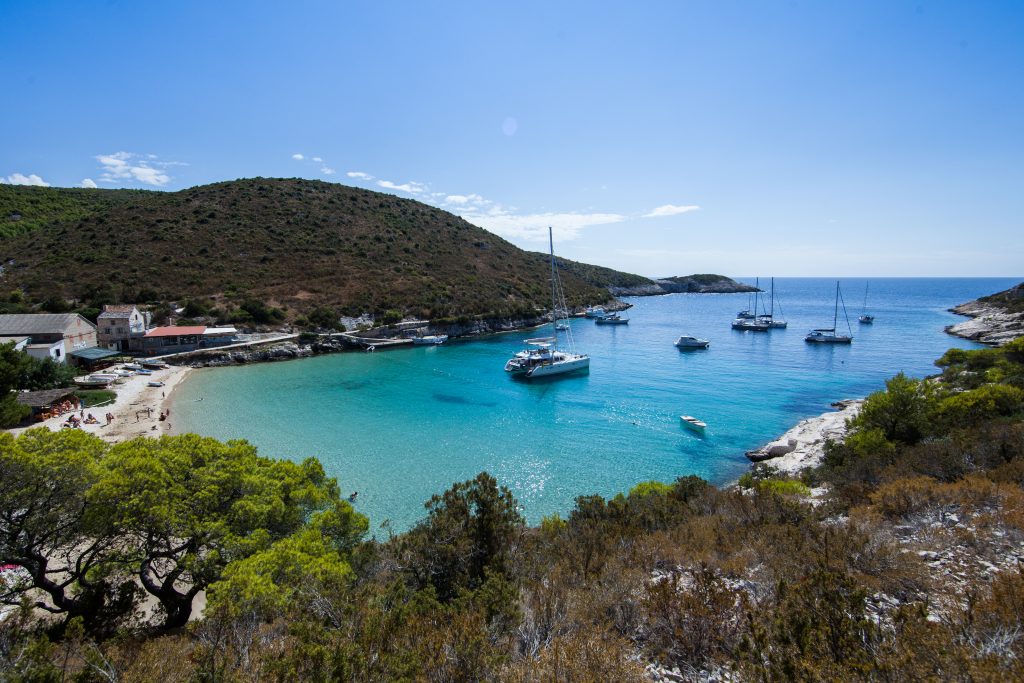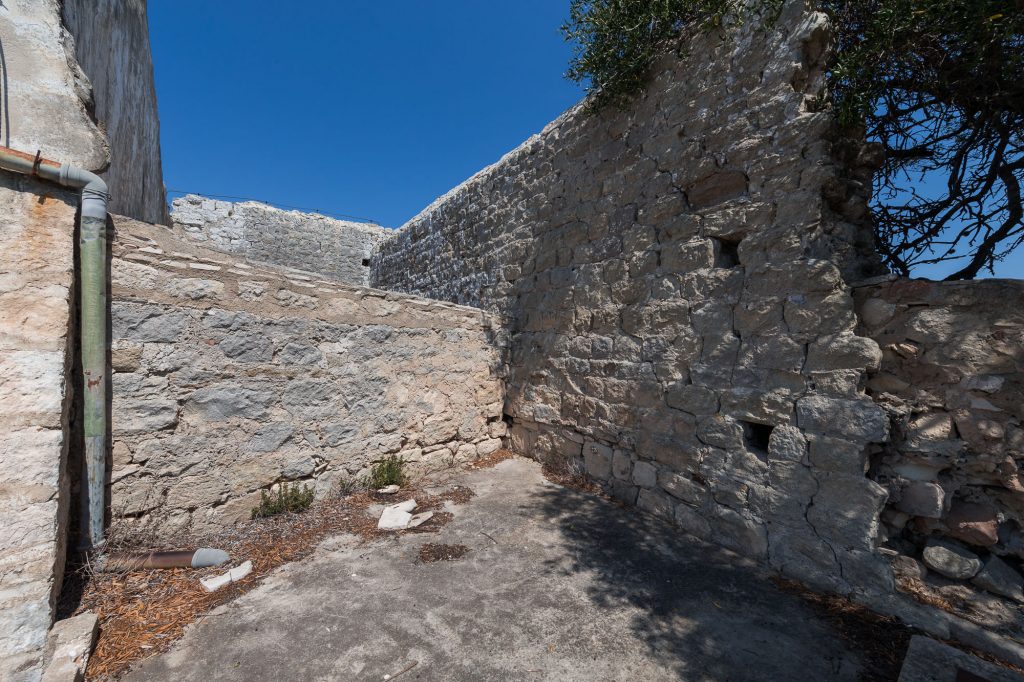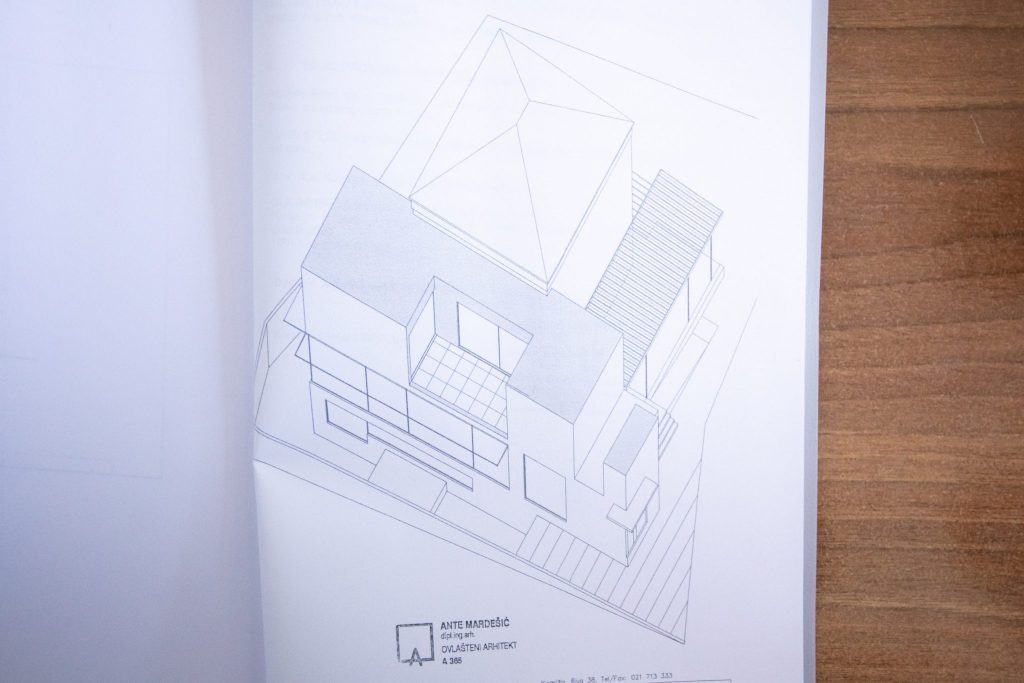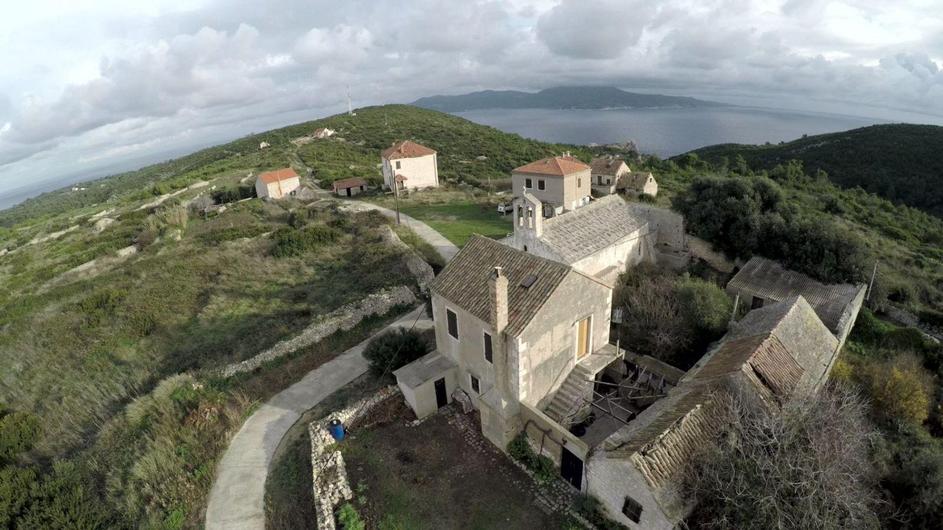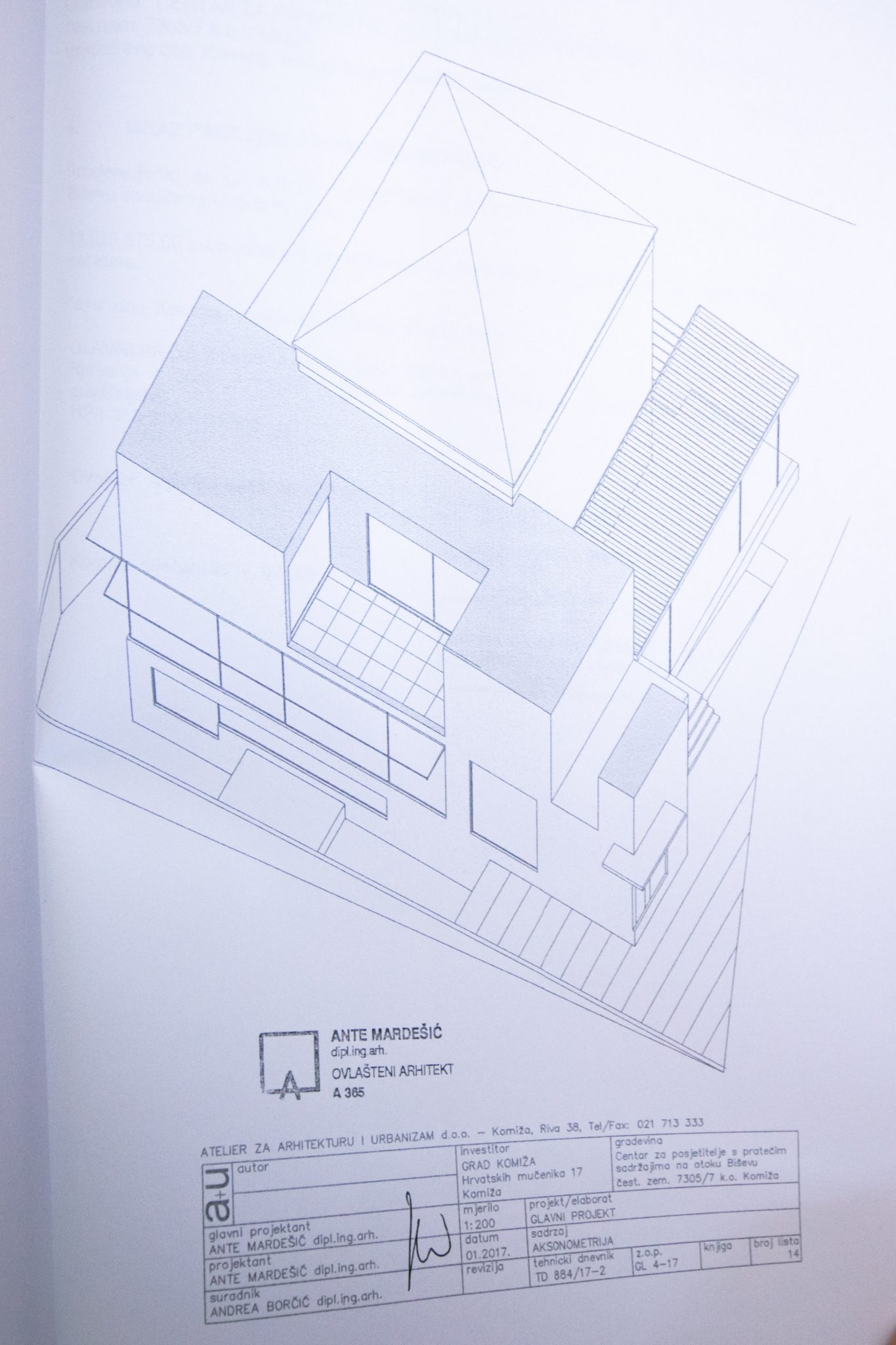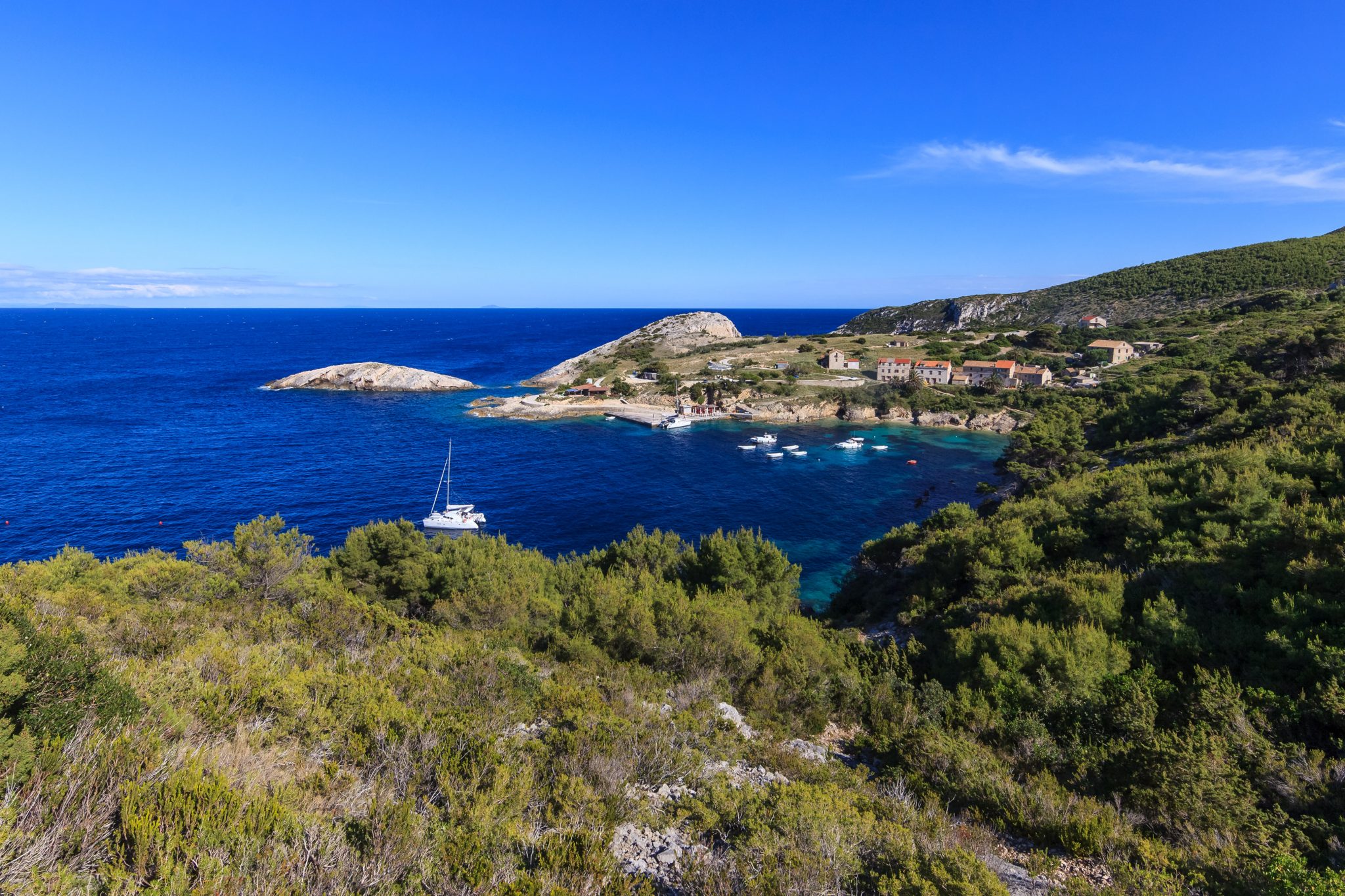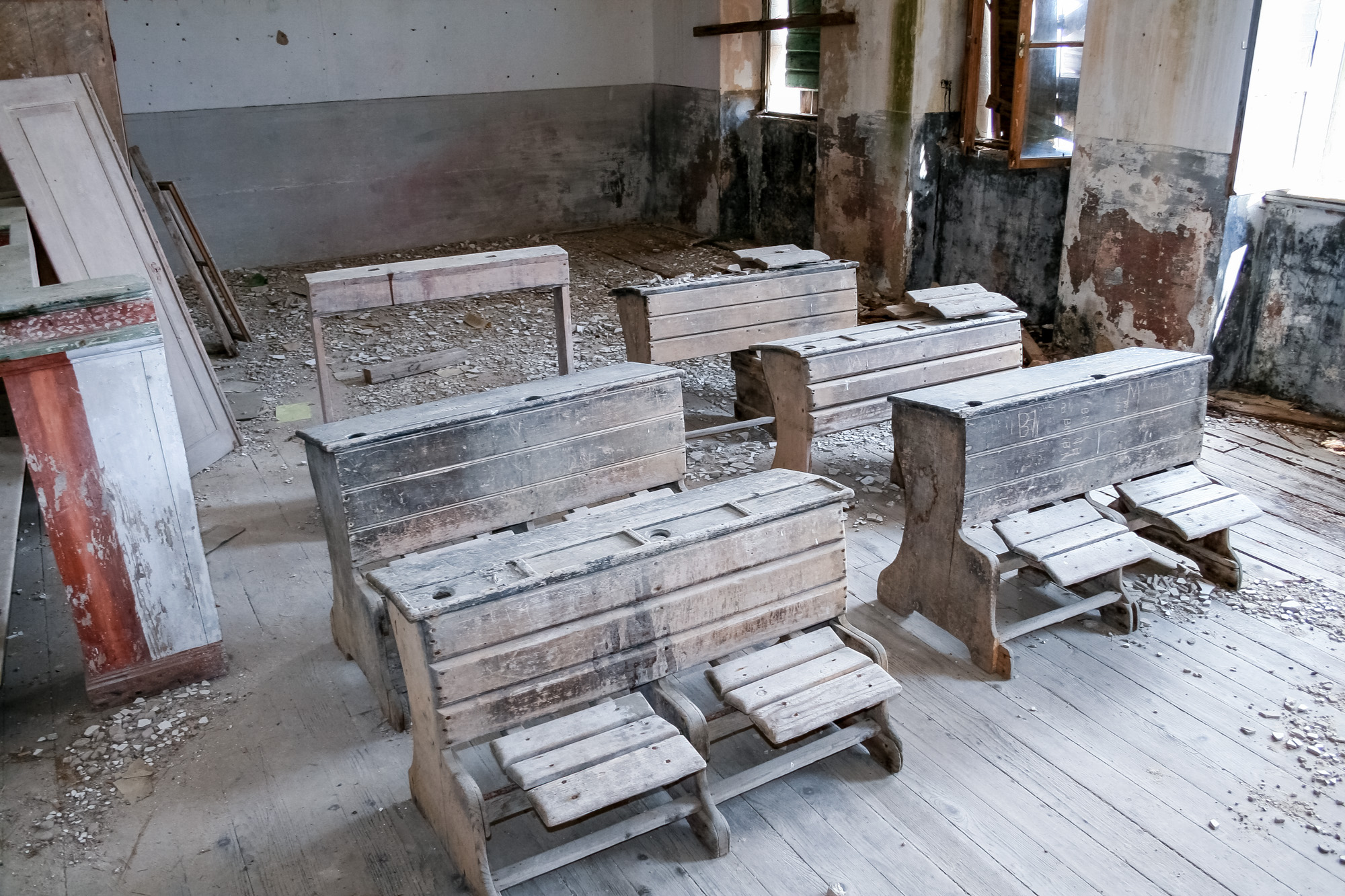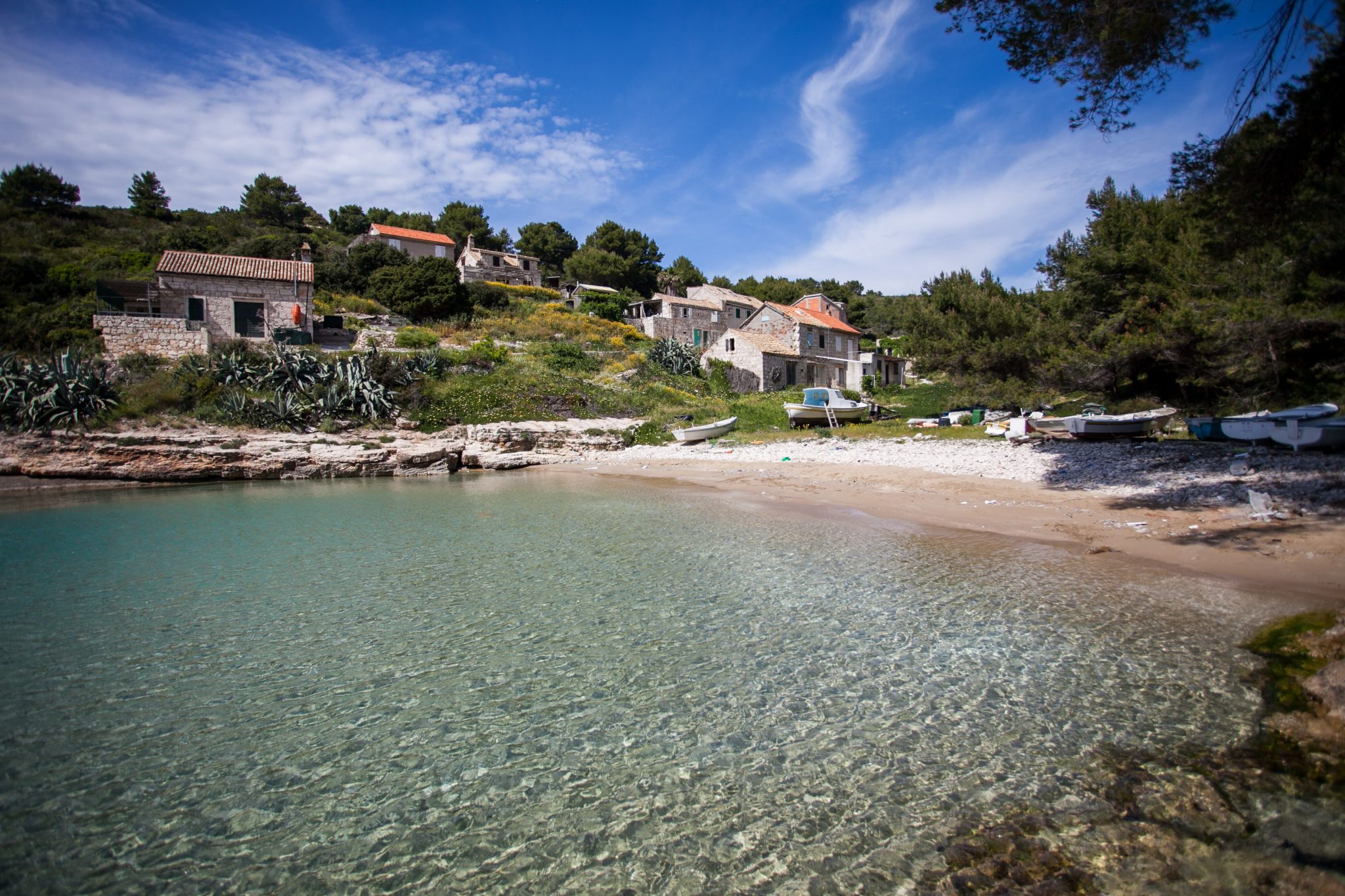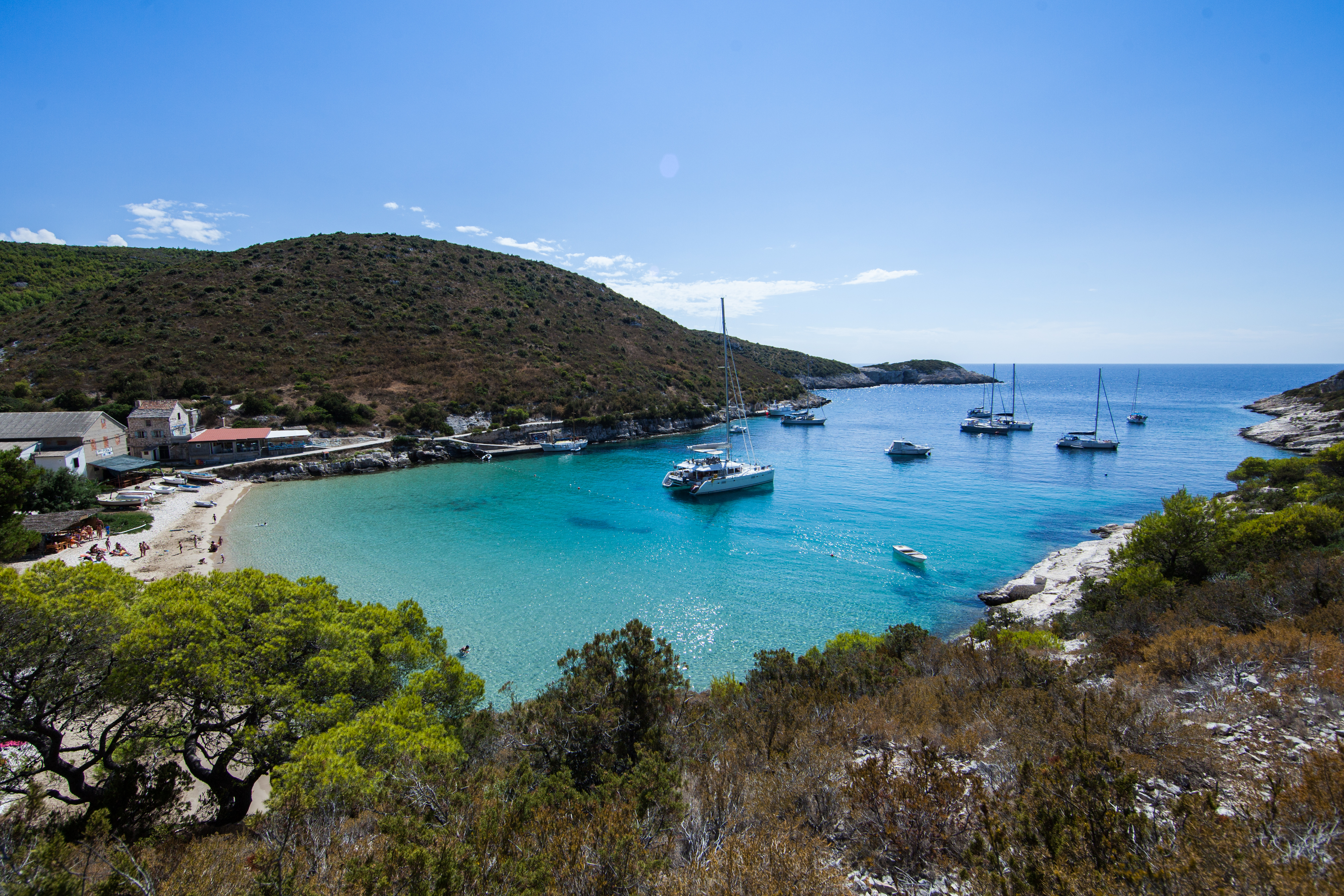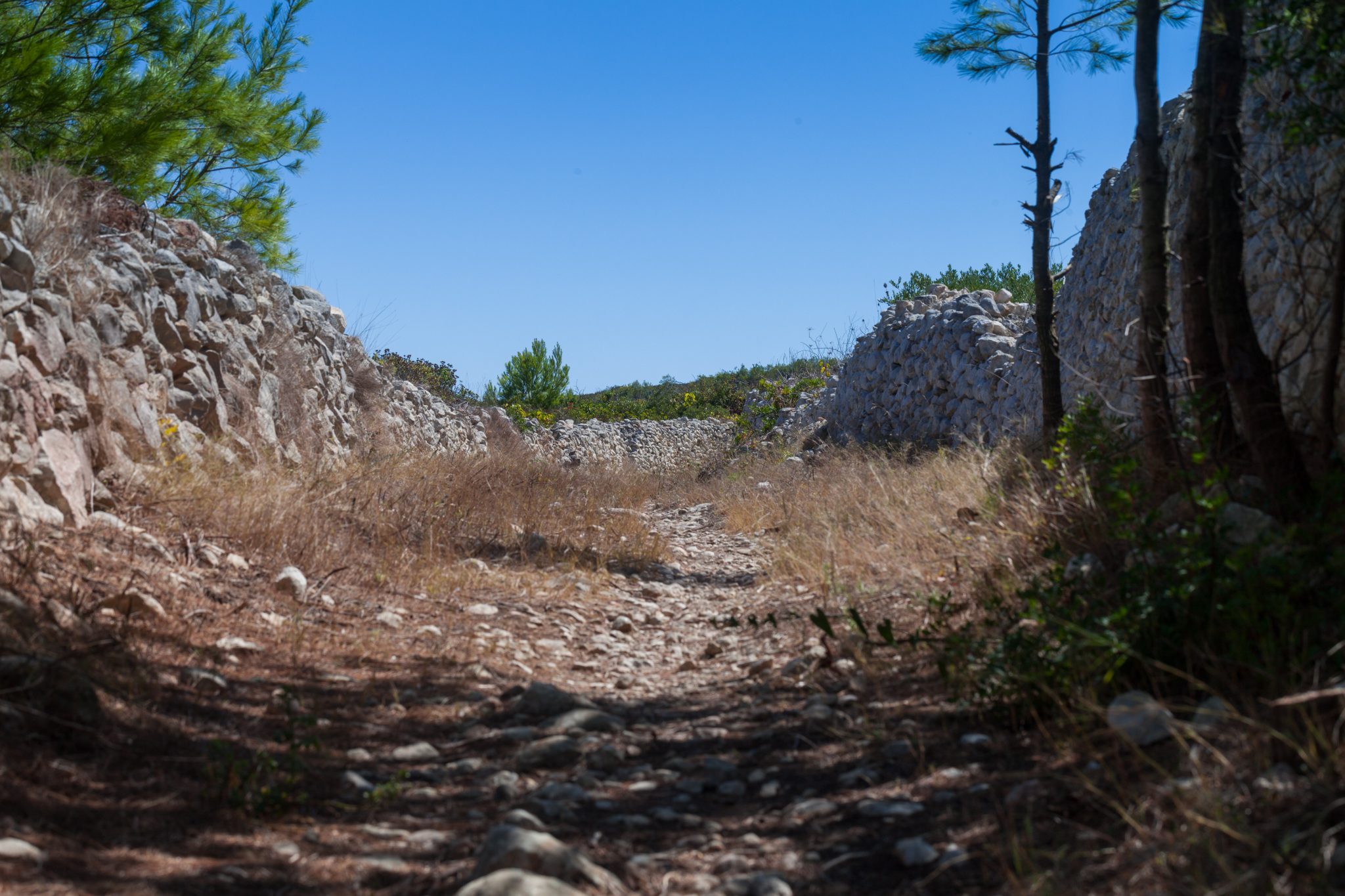Author: mons. Andrija Vojko Mardešić
In 1050, priest Ivan, the son of Gaudi Grlić, built it on Biševo in the area called the Church of St. Sylvester, the Pope. Ivan entered the Benedictine abbey at the Tremiti with the intention of placing this Opatija on the Biševo monastery as well as its other smaller monasteries, called cellae. The surrender was solemnly performed. This solemn act was present, as a witness and Neretva Prince Berigh with his escort. 31 Although there is still a Benedictine order in our hands, it is not surprising that Ivan Grlić addressed Opatija of St. Mary of the Trevius, located on the Tremiti Islands near the eastern Italian coast, about twenty kilometers away from the northern side of Monte Gargano. Namely, this Opatija was in full bloom and very famous in our region.
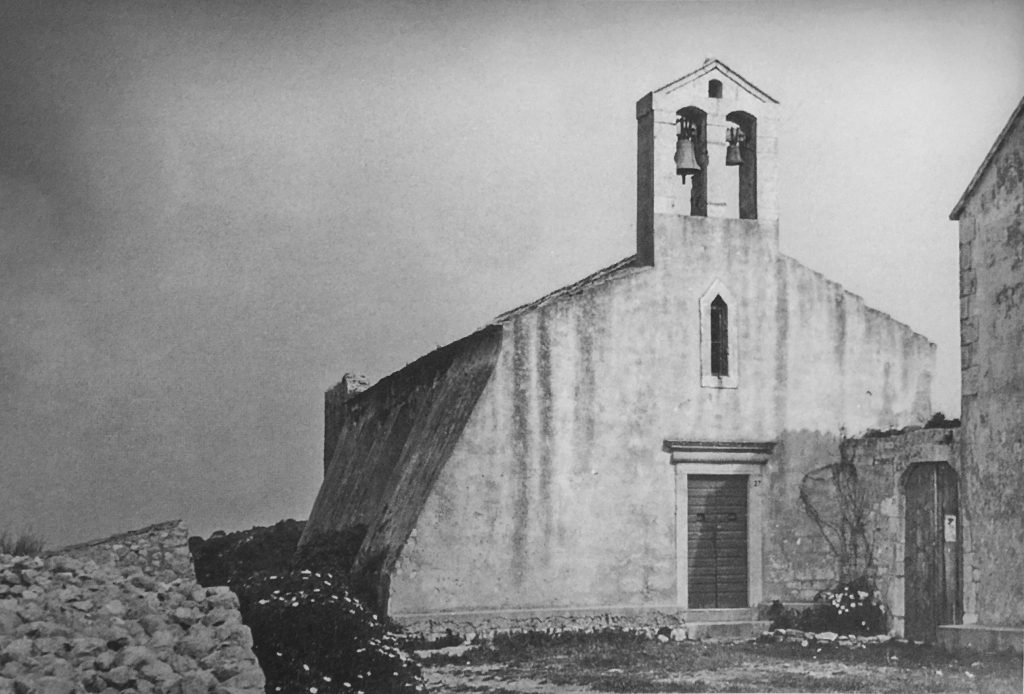
At that time the traffic between our shores and the Treasury islands was very alive. The largest of the three tremator islands was named after St. Duje, the Solemn bishop and the Split protector, and one port on the same island was called the Croatian harbor or Shiavonia . In addition, the Tremiti Abbey was known in the coastal Croatia by the venerable image of Mother of God.There were many of our men pilgrimage, and our young men there, went to Benedictine order and lived as monks in that Opatija under the protection of the Mother of God’s treasure. 32 Farlati writes that the Tremiti Abbey at the end of XIII. and at the beginning of XIV. century pilgrims visited, and although it was well established, it was occupied with a boat, robbed, the monastery lit and killed all the monks. 33
When works were carried out in 1994 and 1995 on the restoration and restoration of the Church of St. Silvestra on the island of Biševo, 34 of these works were not limited to static and structural restoration of the church, but archaeological research was carried out. Then it was found that the Church of St. Silvestra was not built on the free space but underneath it were discovered remains of buildings from earlier periods. Found fragments of glass and ceramics have shown that this entire area of worship was erected on the construction layers of the first and second centuries . Before the Church of Sts. Silvestra was a church built, most probably in VI. century. It had a semicircular apse, and its walls extended to the church ship, but no characteristic shoulders. An early Christian mosaic was found in the apse itself. When making this mosaic, he used an earlier antique mosaic. Directly on this layer was found a large number of fragments of late antique ceramics from the second half of VI. century and the first half of the 7th century.
In this historical heritage, priest Ivan Grlić erected in 1050 the Church of St. Silvestra, Pope. The walls of this church were preserved almost to the roof, but the original wooden roof structure was not preserved. It was most likely to be destroyed in XIII. or XIV. century. Then a new vaulted structure was built with massive pylons that closed the door on the south side of the church.Through this gate, he entered the monastery courtyard and therefore a new door was opened, featuring prominent features of the Romanesque style.
During these archeological works, a stone wall was found on which, on its foundation, an altar wall was erected that divided the church ship into two parts. This means that half of the church was reserved for the time when monks were present during the prayer or service of God.
This shows that there were numerous monks in the monastery at that time. Indeed, it can not be proved that exactly what Dr. Stjepan Barbieri wrote in 1782 wrote that there was a stone on which Bišev was found: Silvestar Abbas octoginta Monachorum ), that is, in the monastery under the podium the Abbey of Silvestro lived eighty monks , 35 but it certainly proves that in the Bishwoman monastery for a long time the monks were more numerous than in many of our other Benedictine monasteries. That’s all understandable. One century before it was founded the Benedictine monastery of St. Andrew on the island of Sveti (Sveti Andriji), also on the island of Vis archipelago, 18 kilometers away from Komiza.
The monastery of St. Andrew on the Sacred Heart or St. Andrew played a very important role in the times of Monte Gargano, Tremiti and Solin when the Benedictines were entrusted with the task of preserving the West and the defense of the East. 36
But when the Monastery of Saint Silvestre on Biševo was founded, he rose to the glory of glory and saw his mother-in-law abbeys at Tremiti and became a bridge over which the current of religious and cultural ties from the west to the eastern Adriatic coast. Thus, the Biševo monastery is increasingly elevated, becomes independent, in 1145 it appears as an independent abbey with its own abyss in its forehead. 37
35. “Very many years after the foundation of the Monastery, and the Church of San Nicolo, there was also Busi’s cradle, where probably the first of its origin, and the richest of Monaci had the Abbate, from which all other monks were governed, and in fact he proves this conjecture on the Stone found on the site of his abandoned Monastery in Busi, on which the words were inscribed. Silvesetr Abas octoginta Monachorum “.. Liber Comisiae, p. 336th to 380th
36 Compare: AVMardešić, Povijesna zrnca o otocima Viškog arhipelaga I., Vis-Komiža, str. 59th-62nd
37 I. Ostojic, nd II, p. 375. 23
He buys his property by Biševo, on the islands of Vis and Hvar, and builds the church of St. Silvestra in Split. Bearing in mind that the religious institutions, which are in the poorest of Dalmatia, were mostly cherished foundations with a small number of monks, except for the tributaries of Croatian national rulers and some other monasteries, 38 it is fair to say that Farlati with the right Monastery of St. Silvestra at He called Bišev to the very prestigious and very rich monastery of St. Benedict . 39
If the Monastery of Saint Silvestre on Biševo really enjoyed its reputation, and on the island of Hvar it shows the list that the Zadar Prince Petar sent to the parish priest Guhalis 1146. 40 This was a harsh and restless time.
Namely, in the first decades of the century the Croats and Byzantium conflicts with the Adriatic.Venice was involved in conflicts with the intention of commanding cities and islands on our coast, Between 1135 and 1145.
The Venetians managed to rule Hvar. Peter of Hvar got their service and Venice set him up for the prince in Zadar, and his power stretched over to Hvar. Prior to the arrival, Venetian Peter replaced two pieces of land in a marina bay with Marisla, the prefect of the island of Vis, for a land owned by María. After replacing Peter, this land, which became his property, was donated to the Monastery of Saint Silvestre on Biševo. In troubled times, Marislav wanted to seize these monasteries and take them for themselves. That is why Peter wrote to him does not touch the monastic possession. If he is dissatisfied with the land he has given him in the cove of Komiža, take some of his property on the island of Hvar, but if Marislav does not want to, Peter commands Guilis not to allow him or anyone to disturb the monks and the dwarves. 41 In this list, as far as it is known for the first time, the name of a prefect of the island of Vis was mentioned for the first time; 42 and more importantly, the earliest known record of the name Komiska cove or Komiža . The list was written in Latin and was written by the Zadar notary Prodan.
38 . Ostojić, nd II, p. 10th
39. “noblissimum et opulentissimum coenobium ordinis benedictini” .. Farlati IV, p. 243rd to 244th
40 CD II, p. 61. 1
41 “Petrus Jadertinus Comes his loyalty to the churches .. Commitment to your ecclesiam sanct ‘Siluestri, which in Buci, vt sicut meum et tuum honorem diligenter, proteegas .. Audio quod Mariš-
laus infestat monasterium sancti Siluestri pro illis uidelicet petiis terre, que fuit in Uacomeza, quas mecum commutau / i / t, et tu inde pristaldus fuisti; tune enim placuit šibi, a mode secus agit, quodno (l potest esse, accipiat enim terras pro terris, u ubi ibi, ut statutum est, siue Faro, que nostri iurispd ‘tinet et et totum hoc non uult, percipio tibi ut ut permittas eum sollicitare abbatem curf fratribus. “CD II, page 61.
42 I. Kasandrić, Hvarski Puštani Ustanak, Split, 1978, p. 14th
That the monastery of St. Silvestra on Biševo was indeed very prominent by the lists of Pope Alexander III. and Manfred Tarantes, son of Emperor Fridr, and the governor of King Konrad in Sicily at the then Naples reign, declaring that the Bishavsky monastery is under their protection.
Second half XII. century was a boom for our Adriatic coast and islands. In 1164 Byzantine Emperor Manojlo Komnen took over Croatia and Dalmatia as the heritage of Duke Bela. That is why he sends to Byzantine army leader John Duch to establish his authority in these areas. Duke of 1165 occupies more than fifty places in Croatia and Dalmatia.
Three years after his arrival, Zadran raises the cannon against the Venetians, expels their prince Domenik Maurocen and takes to his city several thousand Hungarian-Croatian soldiers to defend them from Venice. The arrival of Hungarian-Croatian soldiers provoked a conflict with Byzantium.
Taking advantage of this conflict, Venice entered the war in 1170 and conquered Zadar, even though Venice and Geneva attacked Venice and sent their navy to the aid. The Venetians, besides Zadar, won more Trogir and Dubrovnik, which recognized the Byzantine power. The Zadrani did not agree to be the subjects of Venice and again in 1180 sent a bun against Venice.They admit to his ruler of the Hungarian-Croatian king Bela III. He immediately sent to Zadar a strong army and gave the city a look.
The death of Emperor Manojla Komnena in 1180 ended the Byzantine rule in the conquered part of Dalmatia. This opportunity was skillfully utilized by King Bela III. and sent his army to Croatia and Dalmatia. It occupied the entire coast including the Dalmatian islands. Venice did not reconcile with the new opportunities, but started and tried to return under its power cities and islands that Bela won.
In that uneasy and difficult time, the Monastery of St. Silvestra at Bishop Pope Alexander III addressed. to take it under his protection . The Pope accepted the request of the Biševian monks and wrote to the then desecrated Ursa to take it under the protection of Saint Peter and his. 48Not only the Monastery of Saint Silvestre, which is in Biševo and all his possessions which he or she is legally possessing, but also their Church of St. Silvestre in Split and its property, and the Church of St. Michael and St. Nicholas on the island of Vis with their their visit to them, 49 and their Biševo and all their fields that deal with their hands with the deceased, and their pastures are freed from all tithes.50 The Pope approves them to take new brothers and confirms the right to choose their own by a majority vote, and no one they should not impose on him. The Pope explicitly states that no one should disturb this monastery, his possessions to be taken away, taken away from them, or to diminish or damage them. In the end, the pope threatened with vernal and eternal punishment, whether by lay or church people, who would dare to know the privilege of this priest, to touch the monastic property or his privileges. The 50th Pope’s decision to take the Biševo Monastery under his protection is very solemnly composed and written. Along with the papal signatures, thirteen cardinals and three Roman bishops were signed.
48. ” Alexander episcopus seruus seruorum of the dilectis filiis Vrso Abbati monasterii sancti Siluestri de Insula Buci (in the CD, Smičklas wrote in the book that it should be written by Busi and not by Buci. perpetuum. Quoties to nobis petitur, quod religions and honestati agree dignoscitur, soul no decet libenti concedere et petentium desieriis congruum suffragium impertiri. Ea propter dilecti in domino fillii vestris iustis postulantibus clementer annuimus et prefatum monasterium sancti Siluestri, quod in insula Buci situm est, in that diuino mancipati estis obsequio, sub beati Petri et our protection suscipimus . CD II, p. 173rd
As mentioned, the struggles of Byzantine and Hungarian-Croatian rulers tried to use Venice to reign over the Adriatic coast and the islands of southern Croatia. Between 1135 and 1145, it managed to rule Hvar. It was short of her rule, only thirty years, until 1164. In this short rule, Venice has acted cunningly in accordance with its general policy: it does not change the violent state of affairs in the newly created areas, but slowly and cunningly transforms it and directs it to its desires, is its long-term interests. It used this particularly cleverly on Hvar. She left the county prefect to remain the head of the county of Hvar, but made several measures that respected her plans to divide Hvar both from the church and from the Dalmatian mainland, which was under the rule of Hungarian-Croatian kings. Thus, in cooperation with Zadar, she succeeded in establishing a diocese in Hvar. 51 It was not easy and fast because the old knees, the rural nobility, spelled out their play in the middle of the 13th century. the centuries resolutely yielded resistance and 1309 raised an armed uprising, led by members of the old rural noble family Slavogosta. They wanted to eliminate the city’s new patricians created by the Venetians. Unfortunately, they did not succeed. The opposing forces overcame them, but there was no peace.There was always a fire under the ash, and there was always a danger of getting into a new fire.
49 .. “locum ipsum, in quo prefatum monasterium situm est, cum ipsa insula et aliis suis pertin« ® tiis, in ciutate spaiatensi ecclesiam sanitas Michaelis et eclesiam Nicolai Nicole in insula, que dicU * Lessa, cum earum pertinnentiis et possessiones alias, que habetis in eadem insula “. CD 11, stt.i *
50 .. “que propriis manibus aut sumptibus colitis, siue nutrimentis animalum vestrorum null ^ 1 vobis decimis exigere presumat” .. CD 11., str. 173rd
50a .. “Licet vobis clericos vel laicos and seculo fugientes free and absolutis to conuersionem tccir .. nunc eiusdem loci abate vel tuorum quolibet successorum, nulus tibi quilibet surreption®8. astutia seu violentia proponatur, nisi quem fratres communi consensu vel fratrum pars set ^ secundum del timorem et beatae virginis providerint eligendum “.. CD 11. str 173 174- 51 Compare: AV Mardešić, nd, p. 127th to 133rd
In those troubled and burning times, the Monastery of Saint Silvestra on Biševo, which had its own land and on the island of Hvar, to protect against possible violence, addressed the son of Fr. Manfred Tarent, King Konrad of Sicily, with a request to receive it under his protection .
He accepted the petition and in June 1258 he announced that the monks of the Monastery of St. Nicholas on Biševo were asked to receive them in custody so that they could worship God in the peace, 52 and he accepts their petition and takes them under the kingship and their protection of the dwarves The monastery and their brothers, people, animals, other things and goods that they now own or will acquire in the future. 53 If anyone dares to bother them, he will cause his king and his anger.
As has been said, these quotes, both the papal and Manfredo, show that the Monastery of Saint Silvestra on Biševo was well-known and widely known. It is quite certain and certain that some small, unobtrusive and unidentified monastery would not have the courage to turn to the pope and the royal royal palace.
A leaf from the second half of XII was preserved. century. In the severely damaged beginning of this document, Smičiklas read these words: the country .. Johanni abbati de Jezero quae iacet ..In Croatian translation: sold … to the Immaculate Heart of Jezera, which lies.
52 Novak wrote that “due to the then family, Djivic, he felt endangered by the Monastery of St.Silvestra on Biševo .. that somehow .. protection was addressed by the monks of the mentioned monastery to the son of Fr. Fridr, Manfred Tarentsky, .. with the request to receive them under his protection. ” / Vis I, p. 79./. However, this is not true, as the family of Đivić did not exist at all: N. Duboković Nadalini, Hvar in XIII. century, Options 8-9, Split, August-September, 1985, p.870./. Bishavian monks turned to Manfred in Naples because they knew that the Venetians did not care about the papal warnings. They remembered well that the Venetians from the crusad demanded the cruel destruction of Zadar 1202 in IV. the Crusader military. They even remembered that the Venetians in Zadar crushed 1243 cruelly when they overcame the siege of Zadar and their revolt against Venice. That is why they sought protection from the rulers who could protect them by military force.
53. “Manfredus diui augusti imperatoris Friderici filius, of gratia princeps Tarenti, honoris Sancti Angeli dominus and illustris regis Conrad seconds in the realm Sicilie balius generalis. For presens scriptum notum fieri volumus vniversis, quod venerabilis abbas et conuetus monasterii sanctorum Siluestri et Nicolay de insula Our humilier supplications are magnificent in ours, possessiones, animalia, res omnes et bona eorum que in presentearum iuste possident ac in antea iusto titulo poterunt adipisci, sub regis voique protectione recipere misericorditer dignaremur. CD V., p. 98th
54 .. “nullus quietem eorum perturbare presumat, vel ipsos in personis, quod qui presumpserit, regiam et nostrum indignatione nenouerit incursurum” .. CD V., str. 98th
55 CD II .. p. 363rd
That’s why the Smičiklas doubted whether it was the name of the Abbey of St. Gregory’s Monastery at Vransko Lake or any other monastery. However, Ostojić concluded well that “in front of Johanni’s word” the term terram or something similar has disappeared, and is referred to by the deputy ” quae “. Thus, according to Ostojić’s opinion, it should be said: the country terram Johanni abbati de Jezero, quae iacet. In the Croatian translation: he sold Ivan to the Abbey of Jezera, which lies. Dobro Ostojić concludes: “The lake, on the other hand, is the pond on Biševo, which still bears the name Jezero. Here the lake means the same thing as the Latin lacus , and this is what we say on our islands, and in another document (from 1226) concerning this monastery in Biševo ( de Buco ), a pond or an animal grotto. It is also well known that he was the father of the deceased, who fell to Bishav in mid-XII. century, or name Ivan. We have to keep in mind that the word of the mentioned document refers to Biševski, not Vranski or any other monastery. 56 In the other reading of this whole list, it is clear that there is a reference to the possession of the Biševo monastery and there is no other monastery mentioned.
It is clear from this as the other lists that the Monastery of Saint Silvestre on Biševo had its own countries on the island of Biševo, Vis and Hvar. It is also learned how to get some pieces of land. Some got it as a gift of charity, some bought it with their own money or some parts of their land changed in agreement; owners of other parcels.
Thus in this list, it is written that Prince Pribislav, with the advice of the entire commune of Hvar, donated a piece of land on the island of Vis in the area of Volujak to the Biševo monastery. It is also stated in the same note that Desa Abbot bought in the aforementioned field a piece of land from which on the south was a piece of land that had already been owned by this monastery and which was bought by Abbot Desen. 57
It is also stated that the Abbot of St. Silvestre Desen replaced the monastery with a land on the island of Hvar and Miho Dragunov and received from them a land on the island of Vis called Sudarijun or Mapa and Croatian Ubrus. 58 The writer of this list also wrote that Prince Petronja, with the consent of the council of the Hvarska commune, donated a piece of land in the Draševo field to the Biševo Monastery, which is called Dračevo field. 59 It remains to be noted that Abbot Desen, with the consent of the brothers, purchased from the son of Vlk’s son Krank half of a piece of land in the Vacamece bay, and of the sons of Balen, half of a third of their land.Then they were dissatisfied with some Raden by agreeing that they all first split up and Raden then surrendered the part of the monastery in exchange for the monastic part. And finally, the lists indicate that the property of the Church of St. Michael is under the same church in the valley towards the east and equally southward all that can be cultivated. Those countries in the east are coming to a place called Furca, and the Croatian Rasoha. 60 One copy dated 30 April 1226 was preserved. It was written before the Church of St. Barbara in the presence of Bishop Miha, Prince Pribislav, Desislava Prefect, and Judge Nikola. It is written that Count Desislav, together with his magistrate Nikola and the whole of Hvar, gave the monastery of St. Silvestra to Bisceva, which is called the village in Dragomirska Peča (a burial in the speech of our islands is a piece of land. However, it was stipulated that the brothers of the mentioned monastery should be allowed freely to feed the treasure of Hvar during the winter until the war or when there is abundant rain. 61 Another leaflet from 1289 was preserved which shows that even then the Biševo Abbey enjoyed the name of the Abbey under the papal protection. That year, the Prodan, the abbot of the Monastery of Saint Silvestra on Biševo, demanded from the Hvarska commune to return the hunting socks that were caught in Biševo. The commune met the abbot’s request because the island of Biševo belongs to the monastery of St. Silvestra by right and priestly mercy. 62
56 I. Ostojic, nd II, p. 376 and the literature therein
57 .. que sclauonice apelatur Voluiac 1 CD II, p. 363. .. Et abbas Desa emit .. peciam terre’11 supradicto campo .. ex true real plague est tcrru monasterii, quam emit abas Desen .. CDfl ‘str. 363rd
58 Abas Desen sancti Siluestri vna cum fratribus dedit terram ecclesie in insula The lighthouses for Miche de Draguno and accepit ab is in insula Lexe /! / Terram, que vocatur sudarium siue sclauonice true Ubrus .. CD II., Str . 363rd
59 .. Peciam lands in field spinarum, quod sclauonice apelatur Draceno polle .. CD II, p. 363rd
60 .. Et abas cum fratribus Desen nomine emit medietatem terre, que in valle Vacamege filio Vlcoi nominations Cranco .. Quam teram primo diuiseramus, superueniente uero Rađen cun suis, porcione nostram acceperat et nobis suam dedit .. Terras /! / Vero sancti Michaelis sunt sub eadem ecclesia in the valley versus in oriente and semiliter in meridia, totum quod potest laborari, in the east itaque finem facit in loco, here Furca vocatur, sclauonice true Rasocha .. CD II., p. 364th
60 In Christi Appointments amen. Year dominicum incamationis millesimo CCXXVI., Vltimo die mensis aprilis, ante ecclesiam beate Barbare, exemplary venerable episcomo Micha et prudentissimo comite Pribislauo, iupano Desislauo, judging Nicolao …. Ego iupanus Desislauus vna iudice N / icolao / simul cum omni populus Farensi donamus perpetualiter mamisterio sancti Siluestri de Bugo lacum here uulgo dicitur in pecia Dragomiri such tenor, vt fratres predicti monasterii tempore yemis usque to carnipriuium, when you humor extiterit, nullatenus vetent adaquare bestias Farensium; CD III, p. 254 and 255.
61 In nomine Christi. Year natiuitatis eiusdem millesimo ducentesimo octoagesimo nono, indiction 2., lune /! / Mensis madii …. in consile maiori Phare .. .. Ibidem comparuit dominus The prodanus of the gratas abbas monasterii sancti Syluestri de Buci et .. .. petiens, quod falcones restituerentur sibi, this enchanting avant fuerunt et accepte for illos, here incantauerant cum alii falconis /! / Lisse et aliarum insularum .. .. et cum in dicto consilio fuerit reformatum habita diligenti deliberatione, quod ipsa insula Buci ipsi monasterio pertineat de iure et gratia papali .. ..CD VI., p. 651 and 652 .. “Hunting with hawks was in the middle ages … and was considered the most noble type of hunting. On Hvar and Vis every year on the first eight days of April, a lottery lease was placed on the auction “. Compare: I. Ostojić, nd II, p. 375, note 10.
Farlati brings a copy of this papal decision, but instead of “mensis madii as written in CD II, p.363, writes” mensis martii “. See: Farlati IV, p.249.

It was mentioned that there were once more monks in Bishavska Monastery than in other Benedictine monasteries. However, he also experienced the fate of many Benedictine monasteries; life was poured out in it. Most of the monks went to Monastery of St Nicholas in Komiža.The monastery on Biševo stopped being an abandoned monastery, but there were monks who lived and lived in the Biševo Monastery.
Most probably this was the abolition of the St Nicholas Monastery in Komiža, as in 1458 Pope Kalist III. wrote: Monastery of St Nicholas on Vis, otherwise the Monastery of Saint Silvestra on the island of Biševo. 63 The same pope, at the suggestion of the Bishop of Hvar, Tom Tomasini (the Bishop of Hvar from 1429 to 1463), abolished the Abbey of Opatija and the Benedictine Abbey on the island of Vis, and determined that its incomes were divided into three parts: the Hvar Bishop, the Hvar Chapel and church of the abolished monastery. Shortly thereafter Pope Pius II. he tried to resuscitate the abyss and ordered that his belongings be divided into two parts. One half would be obtained by the Hvar bishop and Kaptol, and another reestablished priest. Although the Pope named two wars in a row, however, that attempt did not succeed. Finally, in 1465, the Bendingtic Monastery in Komiza was extinguished forever. It is clear that this was the case with the Monastery and Biševo.
When his life in the Monastery of St. Silvestre has vanished, he slowly falls and becomes a ruin of the tooth of time. In this area were the houses and gardens of the inhabitants of Biševska hamlet Polje. The church was preserved because the Komiska parish and the inhabitants of Biševo care about it . But over time, some changes have taken place in its exterior and interior.Most likely, it is still in the XV. century church is tilted. Therefore, on the north and south faces, massive supports were built, and the space inside the arches between the pylons was filled in the interior.
Towards the end of the 19th century. centuries more changes were made externally and in the interior of the church. There is a bell tower on the west side of the entrance door on the western front. And in the interior of the church, an apse is converted, and an altar made of plastered bricks leans on the raised wall. The wall was erected by the former triumphal arch that was sufficiently damaged and the sacristy space was given to the place of the former apse.
The works that were performed in 1994 and 1995 by restoring and arranging the Church of St. Silvestra on Bišev returned to its medieval appearance. The altar was erected in XIX. century, and the wall was crushed with an apse, and the church got its original appearance.
63 .. coenobium S. Nicolai de Lissa, alias S. Silvestri de Scopulo Busi .. Farlati IV, p. 262nd
64 .. coenobium S. Nicolai de Lissa, alias S. Silvestri de Scopulo Busi, ob. Mortem Abbatis wild ‘ejusque reditus et vectigalia partim mensae episcopali, partim Canonicis ct clericis, partim111 cathedrali insulae Phariae in perpetum posidenda et fruenda ex autoritatc apostolica iisdcm 1 gata attributable “.. Farlati IV, p. 262nd
65 Compare: Ostojić, nd II, p. 380th
Saniran was the roof where it needed, and a new stone-plate cover was placed over the apse of the apse. A wall was removed from the gap between the pylons. When removing this wall, a graphite showing the gallium was detected. At the center of the church, stone facades are the hallmarks of the former appearance of the altar. At the spot where the mosaic was found, a wooden floor was set up to provide insight into this important discovery. A plank is sanitized, and the facade and interior walls are plastered with lime plaster, but the old part of plaster graphite plaster is preserved.
By removing altars from the 19th century, century and the wall to which he was named, the church was once again receiving an apse that was sanitized by injection as well as the walls. In the church, in front of the apside, in the direction of the altar toward the door, a grave was found that most probably stems from the time when Priest Ivan Grlić built the Church of St. Silvestra. As only one man was buried in it, it means that he was buried in a person who was to be given a special tribute. It can therefore be presumed to be the grave of Ivan Grlić, the founder and builder of this church. 66
66 M. Katić, Church of St. Silvestra on Biševo. In: Croatia zora, the journal of Matica hrvatska -Vis, no. 17/18, yr. 1977, str.l2. All the data on the reconstruction of the Church of St. Take Silvestra from this article with a writer’s permission. I warmly thank her here.
Two further tombs were found in the southern and northern walls, where more people were buried. Certainly there were common tombs of Benedictine monks who lived and died in Biševo Monastery for decades. It might be assumed that one grave was for Benedictine monks, and the other for people who lived in Biševo and worked on monastery fields. All of their fields could not be treated by Benedictines themselves, but they had to take the burdens and people who lived near their monasteries. It is not excluded that it could have been on Biševo as well.
The arrow-shaped window on the eastern wall above the apside gives a special seal to the entire interior of the church. Outside, tall and narrow, and inside out. It is set so that in the morning hours, while the sun is outstretched, a powerful band of light penetrates through it. As it was difficult to maintain, moisture penetrated through it, it was obscured in a previous time. It is now reopened and its function is restored.
During the recent conservation works, the south-facing door was also arranged, which led to the yard, and indirectly in the rooms of the former monastery. This discovery encourages the need to continue exploring the monastery rooms because they do not know anything about them. Unfortunately, not only is there nothing to know about the monastery’s premises, but it has very little preserved its archival material and artistic treasures that the Church and Monastery of Biševo had.
Several lists have been mentioned, which are already mentioned in this work, which bear witness to the reputation and rich possession of the Biševo monastery.
From the artistic treasure now only the icon of the Virgin Mary is located in the Cathedral of Hvar, on Hektorović’s altar. The old ones called this icon Madonna de Buci or de Busi , Biševska Madona.
More recently he wanted to argue that he had been transferred from Biševo, but changed her name. They called the Lady of Carmel or Hvarska Madonna. The latest conservation works confirmed that the old name of Biševska Madona was correct and established the place where this icon stood on the wall of the Church of St. Silvestra on Biševo. 67
I finish writing about the church and monastery in Biševo in the words of an archaeologist who worked on archaeological and exploration works: ” The very area of the Church of St. Silvestra’s architectural and historical complexity, topographic accommodation, best reflects the atmosphere in which the life of the medieval Benedictine monastery took place. The Church and the Field as Incarnation of the Benedictine Church: “Ora et labora”, “Pray and Work” .
The raster of the plots of land is correct and an engraved path between them leads straight from the church to the field. This “decuman” firmly sets up the church monastery in the center and the beginning of a medieval cultural landscape that we can not experience as strong as anywhere in Biševo.
Here besides the church and the surrounding area is a part of the cultural heritage, the monastery is only the core from which we begin to read the historical landscape. Silvestra means at least partial restoration to the life of one of the most important sacral monuments of our national history. The Bishwana Church represents a constant, living document of the presence of Croats in this area from the time of Berigovina to today. ” 68

